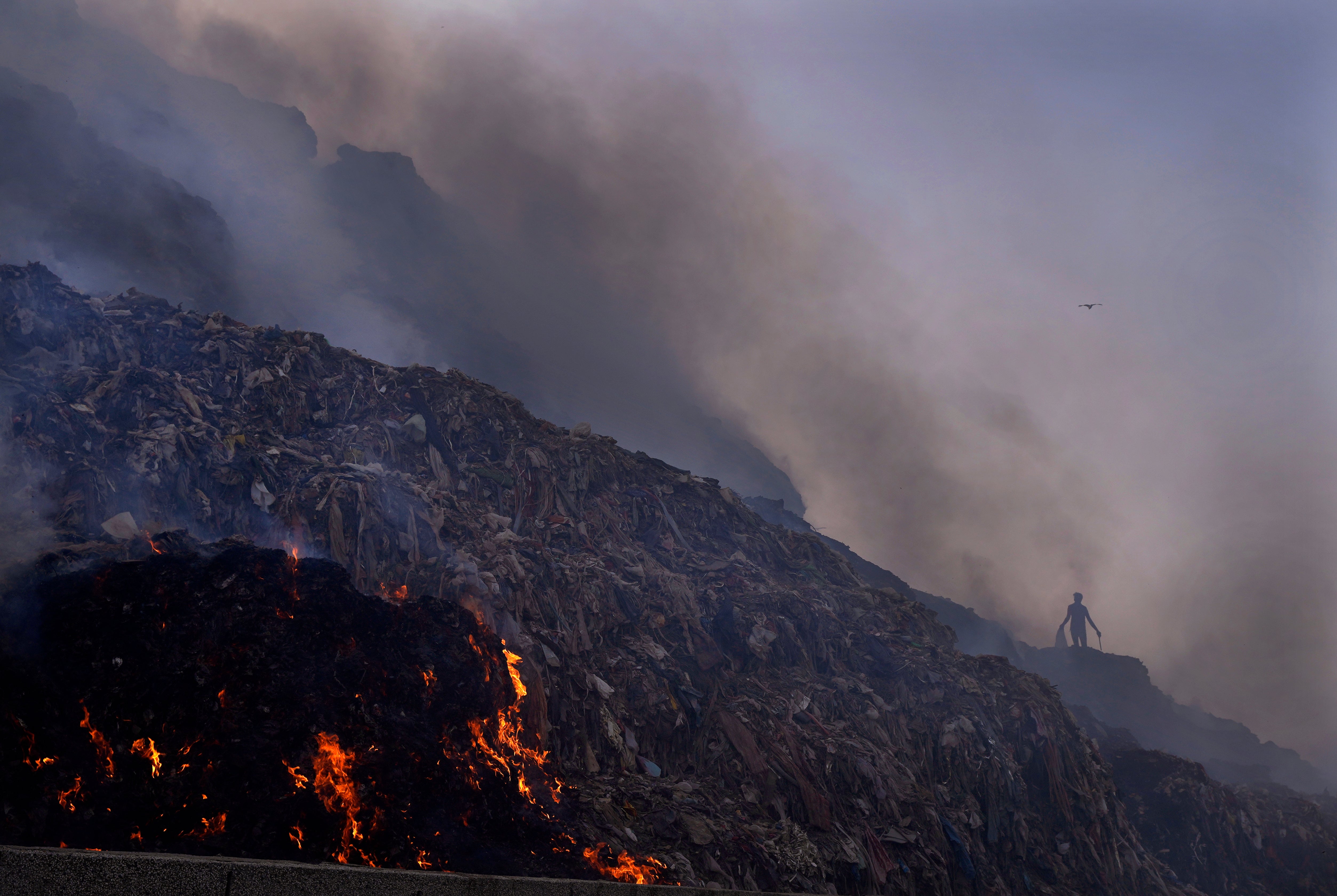Satellite data finds landfills are methane 'super emitters'
Landfills are releasing more planet-warming methane into the atmosphere from the decomposition of waste than previously thought, a study suggests

Your support helps us to tell the story
From reproductive rights to climate change to Big Tech, The Independent is on the ground when the story is developing. Whether it's investigating the financials of Elon Musk's pro-Trump PAC or producing our latest documentary, 'The A Word', which shines a light on the American women fighting for reproductive rights, we know how important it is to parse out the facts from the messaging.
At such a critical moment in US history, we need reporters on the ground. Your donation allows us to keep sending journalists to speak to both sides of the story.
The Independent is trusted by Americans across the entire political spectrum. And unlike many other quality news outlets, we choose not to lock Americans out of our reporting and analysis with paywalls. We believe quality journalism should be available to everyone, paid for by those who can afford it.
Your support makes all the difference.Landfills are releasing far more planet-warming methane into the atmosphere from the decomposition of waste than previously thought, a study suggests.
Scientists used satellite data from four major cities worldwide — Delhi and Mumbai in India, Lahore in Pakistan and Buenos Aires in Argentina — and found that emissions from landfills in 2018 and 2019 were 1.4 to 2.6 times higher than earlier estimates.
The study, published in Science Advances on Wednesday, is aimed at helping local governments carry out targeted efforts to limit global warming by pinpointing specific sites of major concern.
When organic waste like food, wood or paper decomposes, it emits methane into the air. Landfills are the third-largest source of methane emissions globally, after oil and gas systems and agriculture.
Although methane only accounts for about 11% of greenhouse gas emissions and lasts about a dozen years in the air, it traps 80 times more heat in the atmosphere than carbon dioxide does. Scientists estimate that at least 25% of today’s warming is driven by methane from human actions.
“This is the first time that high-resolution satellite images have been used to observe landfills and calculate their methane emissions,” said Joannes Maasakkers, lead author of the study and atmospheric scientist at the Netherlands Institute for Space Research.
“We found that these landfills, which are relatively small compared to city sizes, are responsible for a large fraction of total emissions from a given area,” he said.
Satellite data to detect emissions is still a relatively new field, but it's being used more and more to observe gases across the world. It means more independent organizations are tracking greenhouse gases and identifying big emitters, whereas previously local government figures were the only source available.
“This new work shows just how important it is to manage landfills better, especially in countries like India where landfills are often on fire, emitting a wide range of damaging pollutants,” said Euan Nesbit, an Earth scientist at Royal Holloway, University of London, who wasn't part of the study.
Earlier this year, smoke hung over New Delhi for days after a massive landfill caught fire as the country was sweltering in an extreme heat wave with temperatures surpassing 50 degrees Celsius (122 Fahrenheit). At least two other landfill fires have been reported in India this year.
Nesbit added that the newer satellite technology, combined with on-the-ground measurements, makes it easier for researchers to identify “who is polluting the world.”
China, India and Russia are the world’s biggest methane polluters, a recent analysis by the International Energy Agency found.
At last year's United Nations climate conference, 104 countries signed a pledge to reduce methane emissions by 30% by 2030 compared with 2020 levels. Both India and China are not signatories.
The authors plan to carry out more research into landfill sites across the world in future studies.
“It is a quickly developing field and we expect more interesting data to come out soon,” said Maasakkers.
___
Follow Sibi Arasu on Twitter at @sibi123
___
Associated Press climate and environmental coverage receives support from several private foundations. See more about AP’s climate initiative here. The AP is solely responsible for all content.